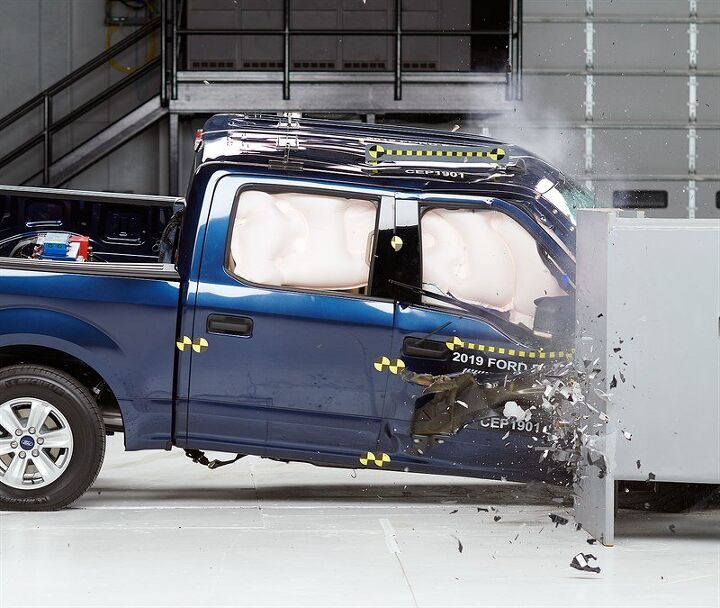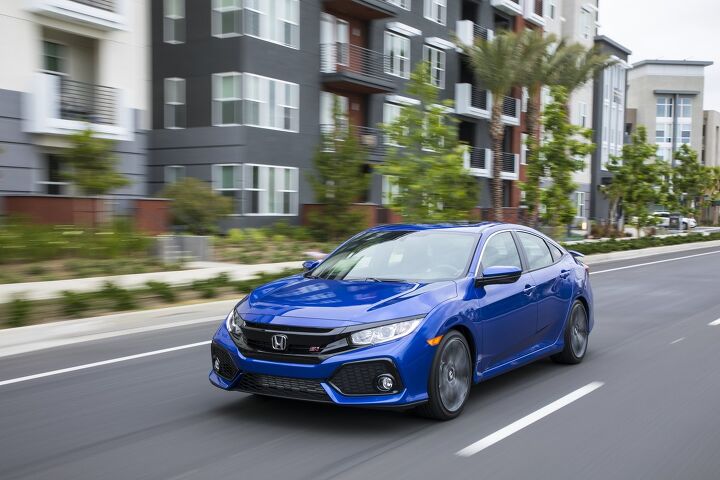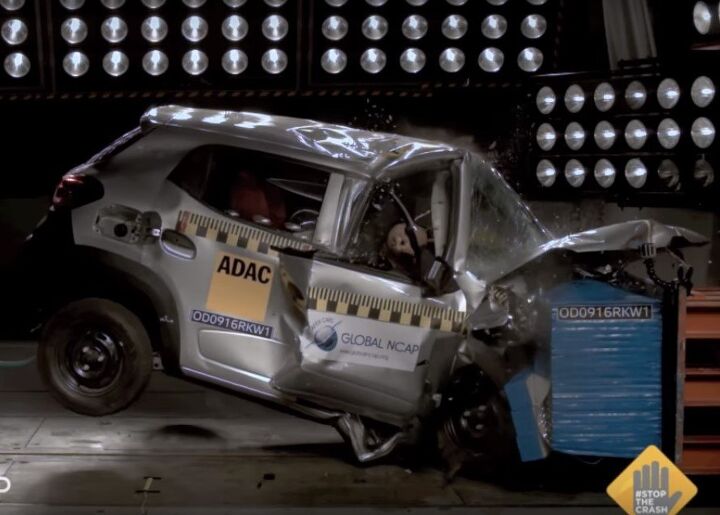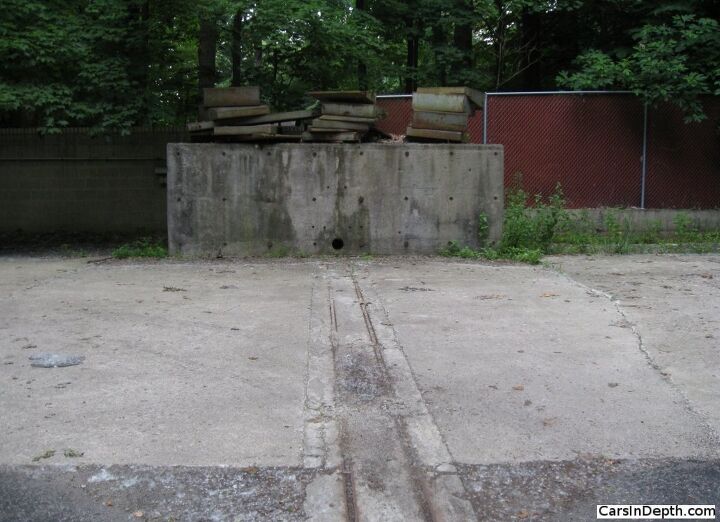#CrashTesting
IIHS: Here's Why We Don't Crash Test at More Than 40 MPH
The Insurance Institute for Highway Safety occasionally updates its testing methods to keep pace with a rapidly evolving automotive industry, but there’s one thing that hasn’t changed with the new tests: Crash speeds. In a recent YouTube video, the IIHS detailed why it hasn’t increased crash-test speeds above 40 mph despite the fact that most highway drivers routinely hit much higher speeds.
Mid-Size Cars Struggle in New IIHS Test
The Insurance Institute for Highway Safety has updated its side crash test and the results for mid-size cars is, uh, not good.
IIHS Beefs Up Automatic-Emergency Braking Test
The Insurance Institue for Highway Safety (IIHS) has beefed up its automatic-emergency braking test because it’s now gotten too easy.
According to the IIHS, that’s because automakers have now met the standards it set when it began the test in 2013.
IIHS Wants Bigger, Harder Crashes for Its Side Impact Tests
While the Insurance Institute for Highway Safety (IIHS) has gradually evolved its testing procedures since its inception, it has hit the accelerator over the past few years, eager to crash into a new era of knowledge… Alright, so it actually just wanted to assess problematic crash trajectories and headlight safety for insurance companies. Still, they’ve been making meaningful changes in a bid to boost overall safety.
On Thursday, the institute said it plans to continue evolving its crash-test procedures. It claims it’s gotten so good at developing side-impact assessments, “the current side ratings no longer help consumers distinguish among vehicles or point the way toward further improvements.”
The solution? Slam bigger, heavier items into a vehicle’s profile and see what happens.
Crash Test Dummies: Ford Tops IIHS Tests, Everyone's Headlights Suck
There are wars being waged on all fronts in the half-ton pickup truck market, from towing prowess to outright power ratings. Not ones to pass up an opportunity to bash their competitors over the head with a truck-shaped chair, manufacturers seem to take every opportunity to harangue their opponents – especially when empirical data puts them in the driver’s seat.
The latest to do so? Ford, leveraging the recent IIHS crash test results of its 2019 F-150 Crew Cab pickup to take a shot or three at The General.
Let's Applaud These Affordable Cars for Their Tesla Model 3-like Crash Safety
Sorry, was that too snarky? Our headline alludes to the National Highway Traffic Safety Administration’s recent awarding of five stars in all crash test categories to the Tesla Model 3 — a bit of news that’s made the rounds lately. It’s a worthy achievement, so hats off to Tesla for building a car that can take a beating.
However, if you’re still waiting patiently for Tesla to deliver your car, here’s a listing of vehicles costing less than the current “base” Model 3 (the $44,000 Long Range model) that are just as safe in a collision, and are available to buy at a dealership near you. Like, even today.
Piston Slap: The Life Cycle of Structural Enhancements
Chris writes:
Hi Sajeev,
I’m in the market for a new(er) car to replace my 2005 Nissan Quest. Safety is a very important precondition for my purchase since it will be used to transport my kids around our very congested city. I was thinking about leasing a 2017 model and narrowed my search down to a Chevy Equinox, Nissan Rogue, or Mitsubishi Outlander (all about $200/month for 36 months with $3K down). In crunching the numbers, I quickly realized that with the $10,200 or so that I’d spend on leasing a car that I’d eventually have to part ways with, I could easily buy a low mileage example that was between 3-6 years old.
Tesla Misses IIHS Top Safety Pick Award While Chevrolet and Toyota Score
Tech-obsessed and financially stable Americans have an almost fanatical devotion to Tesla’s Model S. The model was deemed “Most Loved” by the Consumer Love Index two years in a row and the Tesla brand currently sits atop Consumer Report’s Owner Satisfaction Rankings.
One place it hasn’t received top marks, however, is in the Insurance Institute for Highway Safety’s recent evaluation of electrified vehicles. The Model S failed to earn the coveted Top Safety Pick+ designation, losing out to the Chevrolet Volt and Toyota Prius.
During the trials, the renowned Tesla only managed an “acceptable” rating in the challenging small overlap test, which simulates crashing into an overpass support beam or telephone pole.
Zero Stars: Watch These Indian-Market Cars Prove What Death Traps They Are
Three versions of a Renault hatchback spectacularly failed their frontal crash tests in India, earning them zero out of five stars, even with an available airbag.
It’s food for thought for the 125,000 Indian buyers who placed orders for the subcompact coffin, but the Renault Kwid isn’t alone in flunking Global NCAP testing in that car-hungry country.
The Maruti Suzuki Celerio, Maruti Suzuki Eeco, Mahindra Scorpio and Hyundai Eon also failed to earn a single star, reports Business Standard.
Subaru Funding Crash Tests Of Pet Carriers, Crates
As part of its effort to keep pets safe on the road, Subaru is funding crash tests of pet carriers and crates.
Honda Fixes Flawed Beam Design In 2015 Fit, Gains IIHS Top Safety Pick Rating
After a poor performance at the Insurance Institute for Highway Safety, Honda has redesigned the front end of the 2015 Honda Fit to correct an issue with the compact’s front bumper beam.
Automotive Archaeology: Where Eaton Crash Tested the First Practical Airbags
One of the Best & Brightest recently asked me to write about the history of automotive safety equipment. Today’s consumers ask how many airbags a car offers as standard equipment but in the 1970s the idea had a difficult time getting accepted, by both automakers and consumers.
Chevy Spark Only Minicar to Pass IIHS Small-Overlap Crash Test
The Insurance Institute for Highway Safety tested a dozen of the smallest cars on American roads with the rigorous new small-overlap crash test and according to Automotive News, all but the Chevrolet Spark performed poorly in the test. The small-overlap test is supposed to recreate collisions when the front corner of one vehicle strikes an immobile object or another vehicle. The test is performed with the driver’s side of the vehicle’s front end hitting a barrier at 40 MPH. It is considered a more stringent test because the front crush zone is missed and much of the crash energy is directed in to the passenger compartment, sometimes causing it to collapse.
Insurance Institute Gives Redesigned 2014 Toyota Corolla Only "Marginal" Score On Small Overlap Crash Test
Recently, the Insurance Institute for Highway Safety, which conducts its own independent crash testing of new cars, added the “small overlap test” to its rating procedures. That particular crash test simulates a 40 mph collision wherein the front driver side corner of the car strikes an oncoming car or a fixed object like a utility or light pole. Twenty five percent of highway deaths in head-on collisions are from that type of wreck. The IIHS yesterday released test results for the newly redesigned 2014 Toyota Corolla and the compact sedan only received a “marginal” score. According to Automotive News, the Corolla cannot earn the institute’s Top Safety Pick honors, which are restricted to cars that have “acceptable” or “good” scores on all crash tests.
China's Qoros Earns 5-Star Crash Rating in Euro NCAP Testing
Automotive startup Qoros Auto Company has an interesting business model. Backed with the manufacturing know how of China’s Chery corporation, and the funds of the Israel Corp. holding company, controlled by the Israeli Ofer family, Qoros is designing cars in Europe to be sold in Europe, but built in China.



























Recent Comments